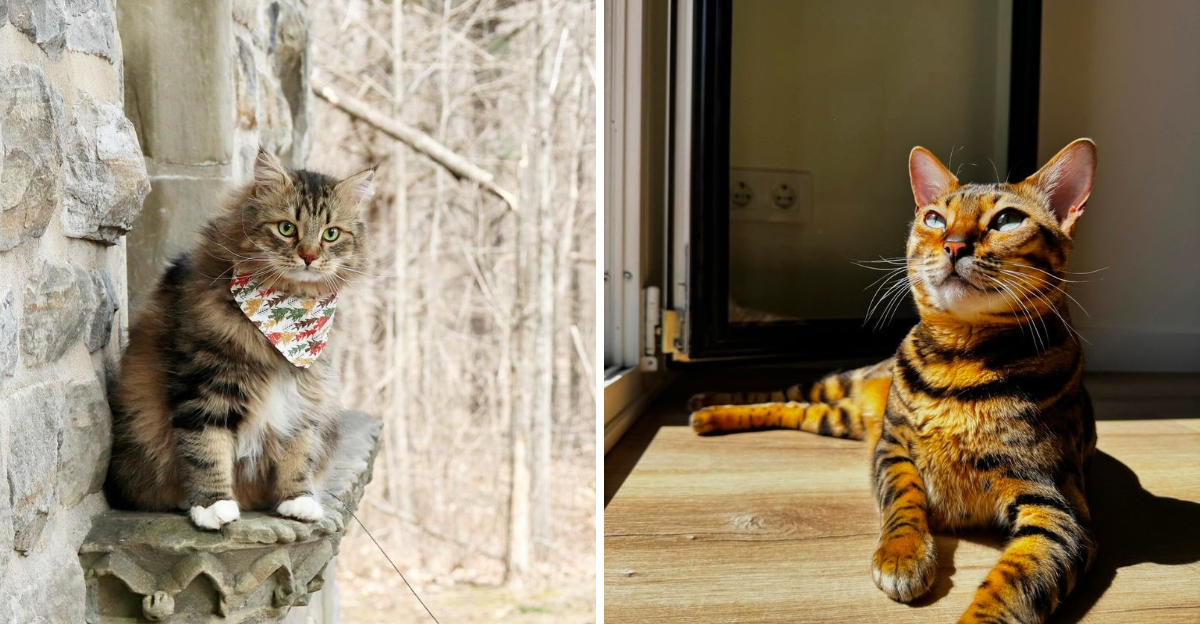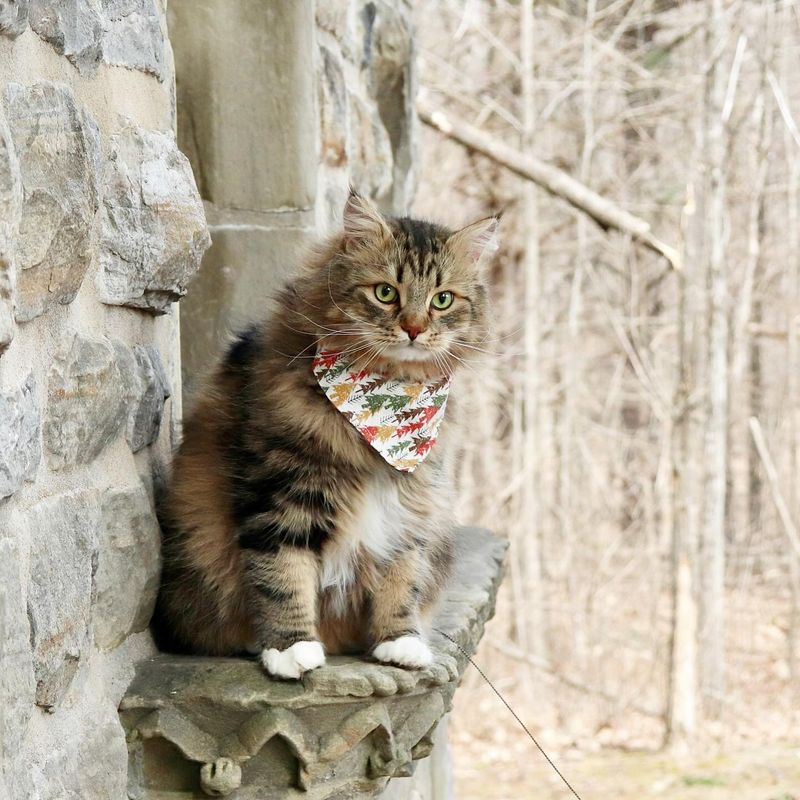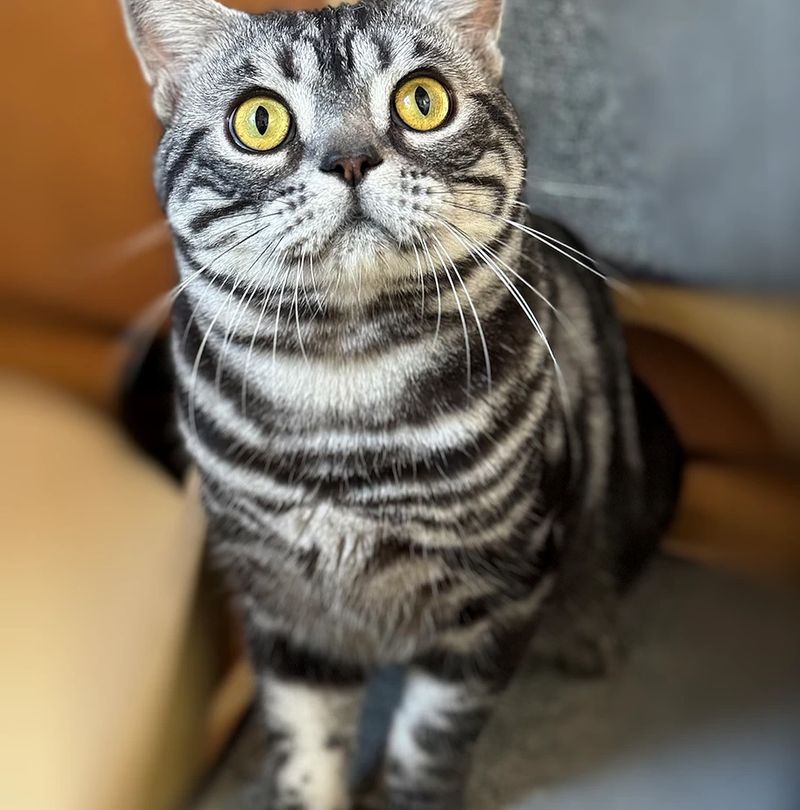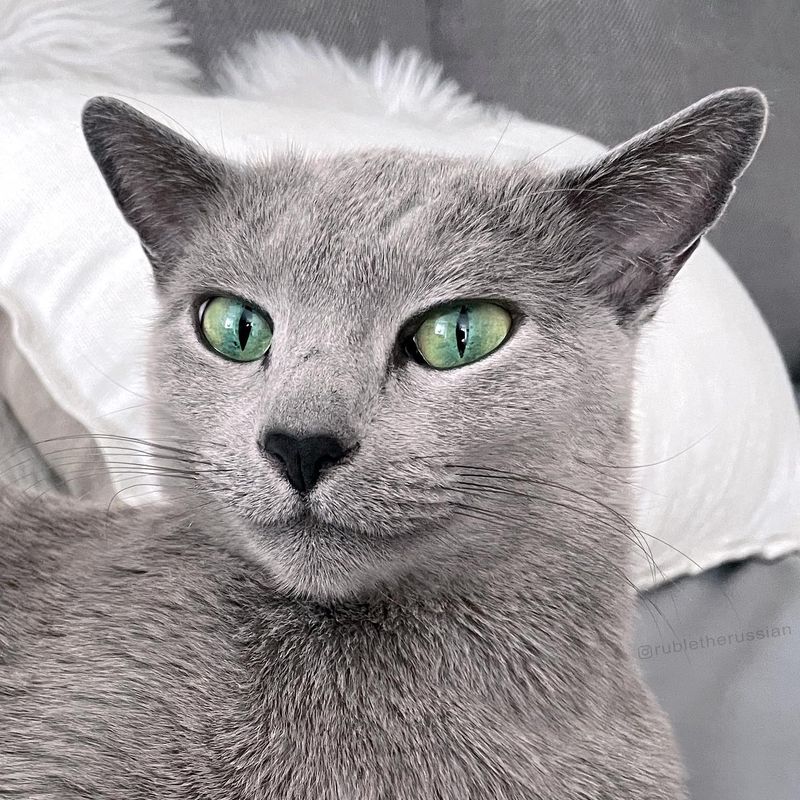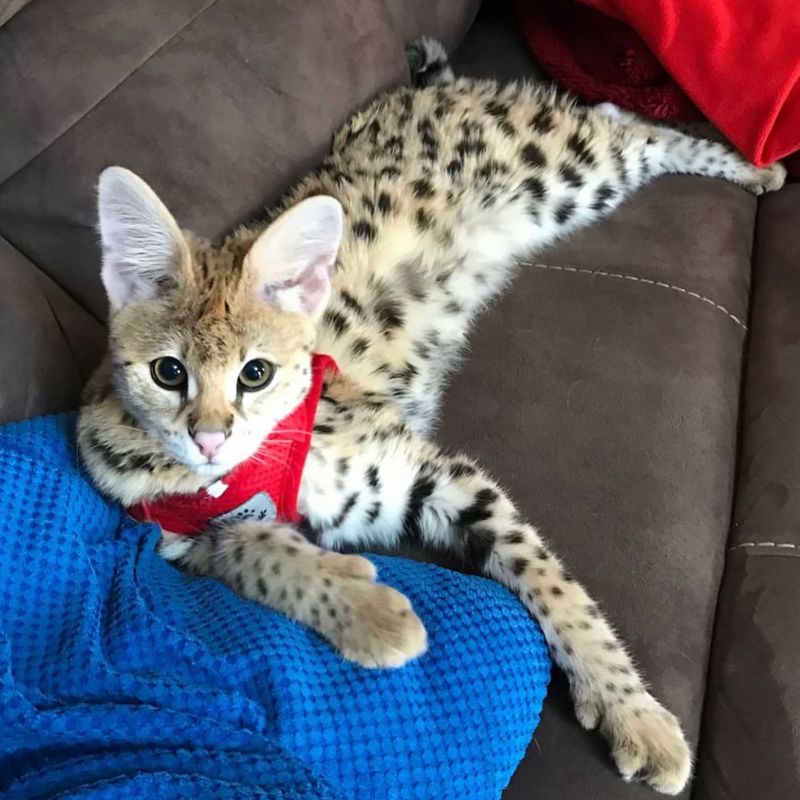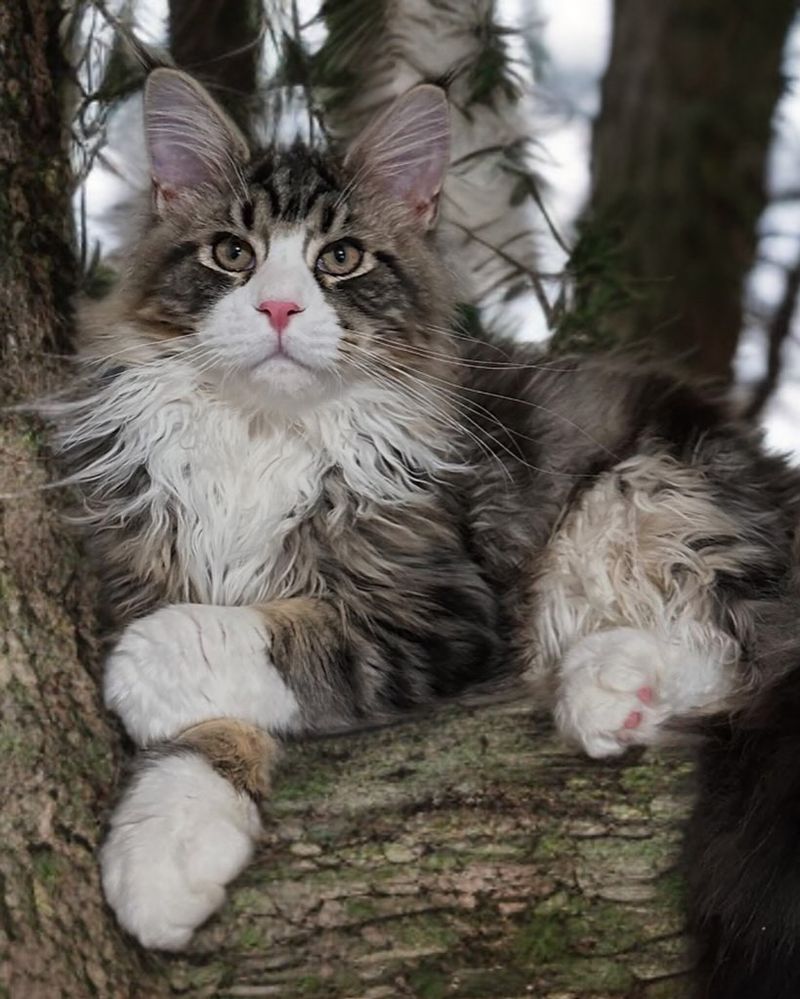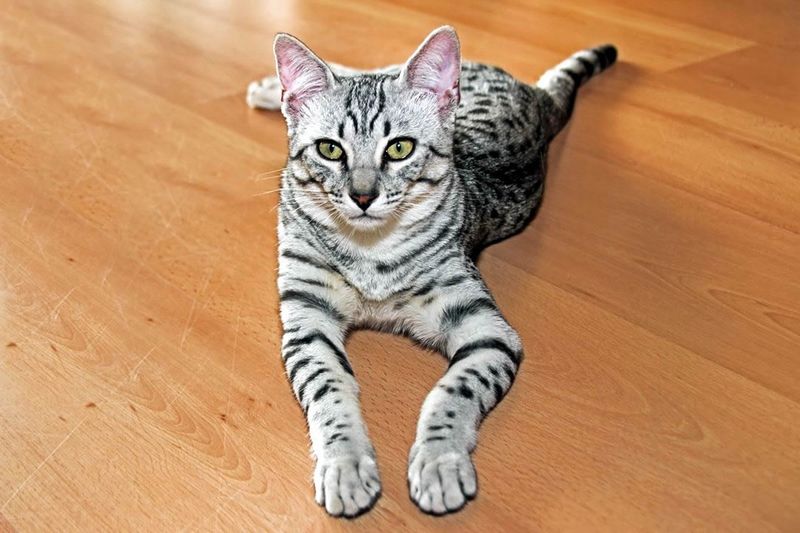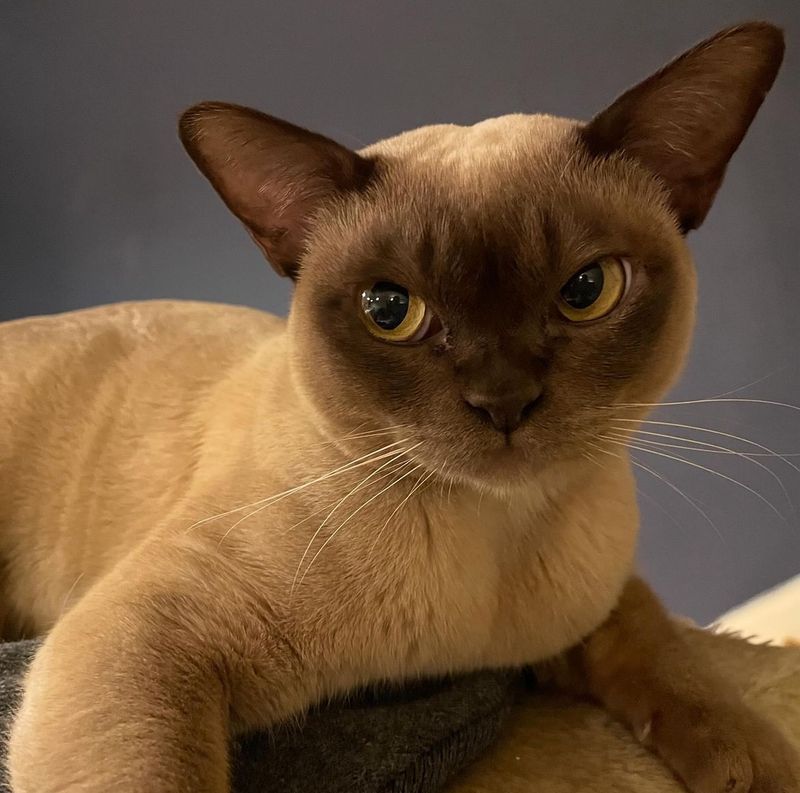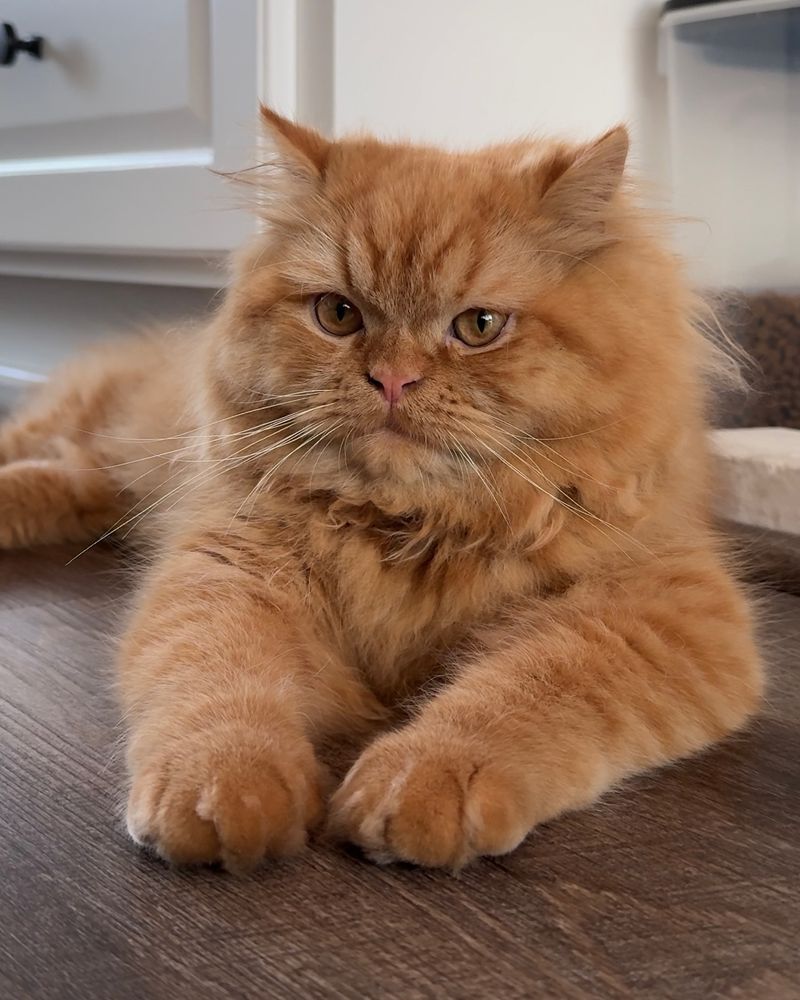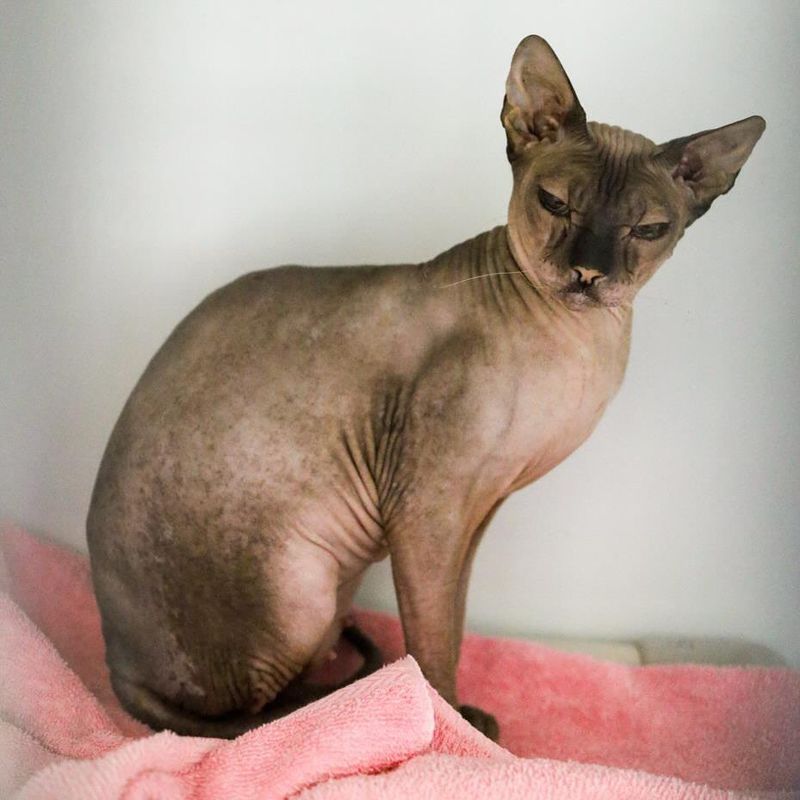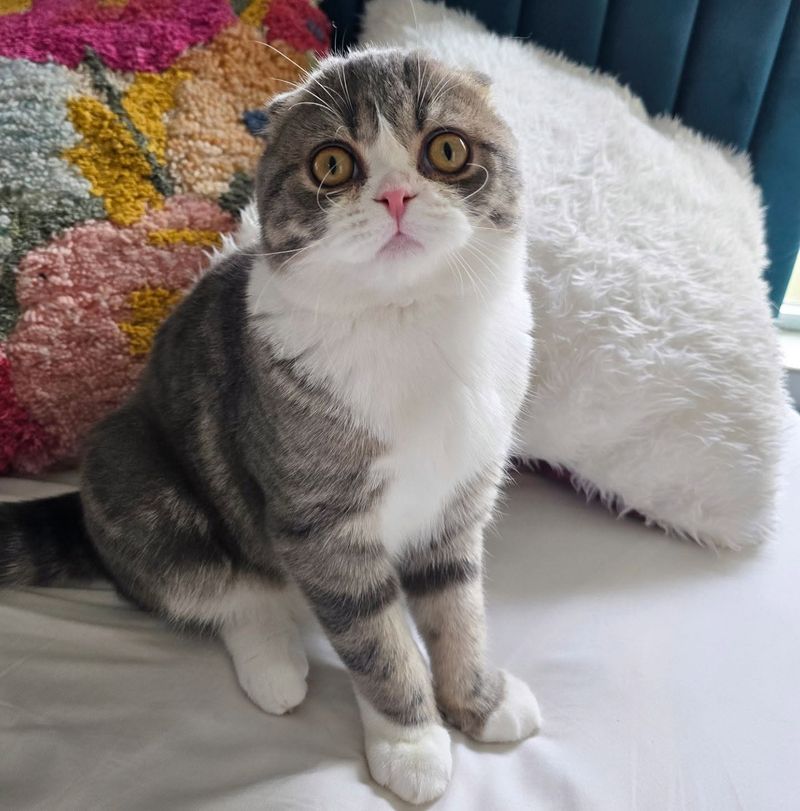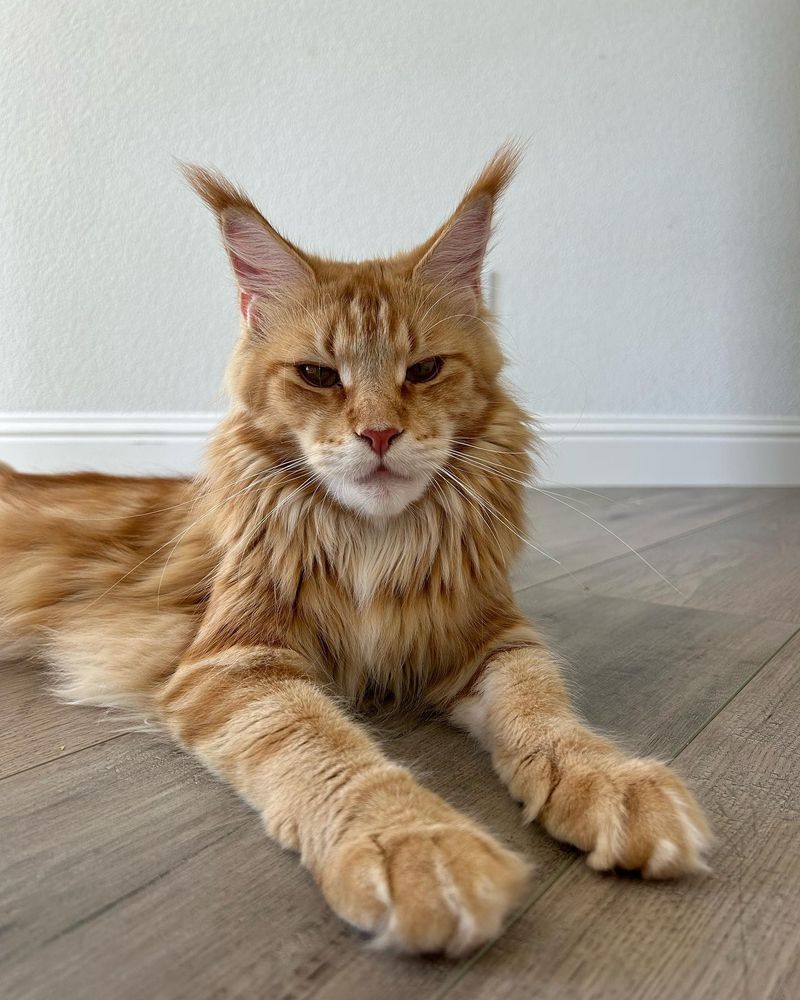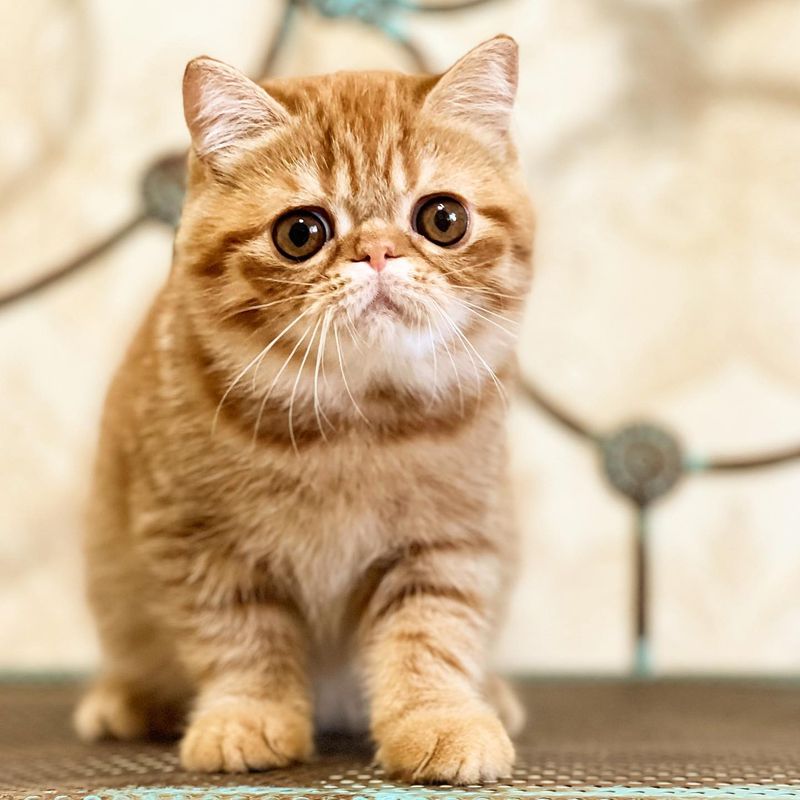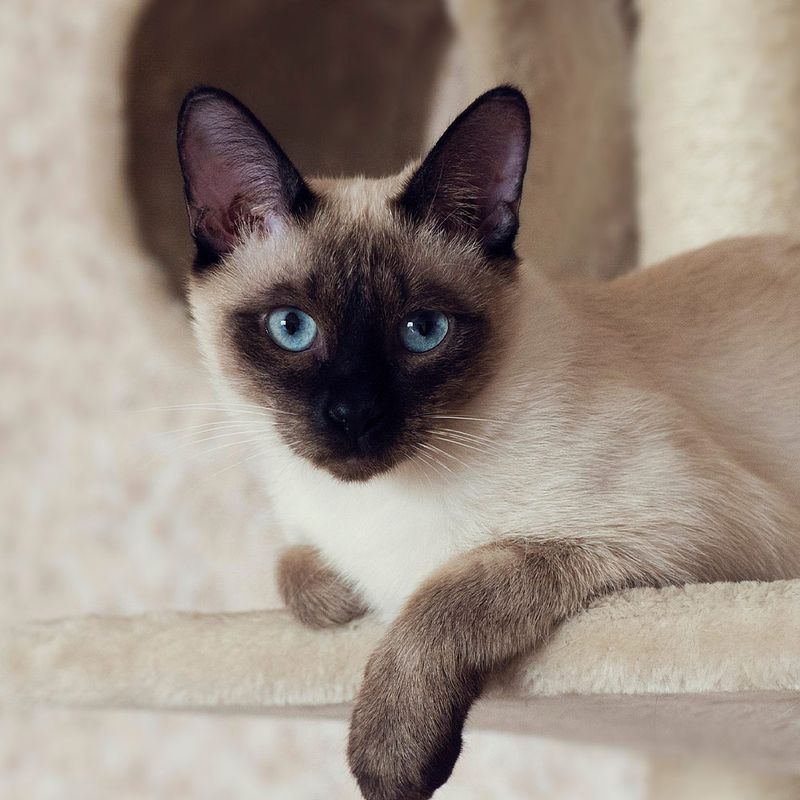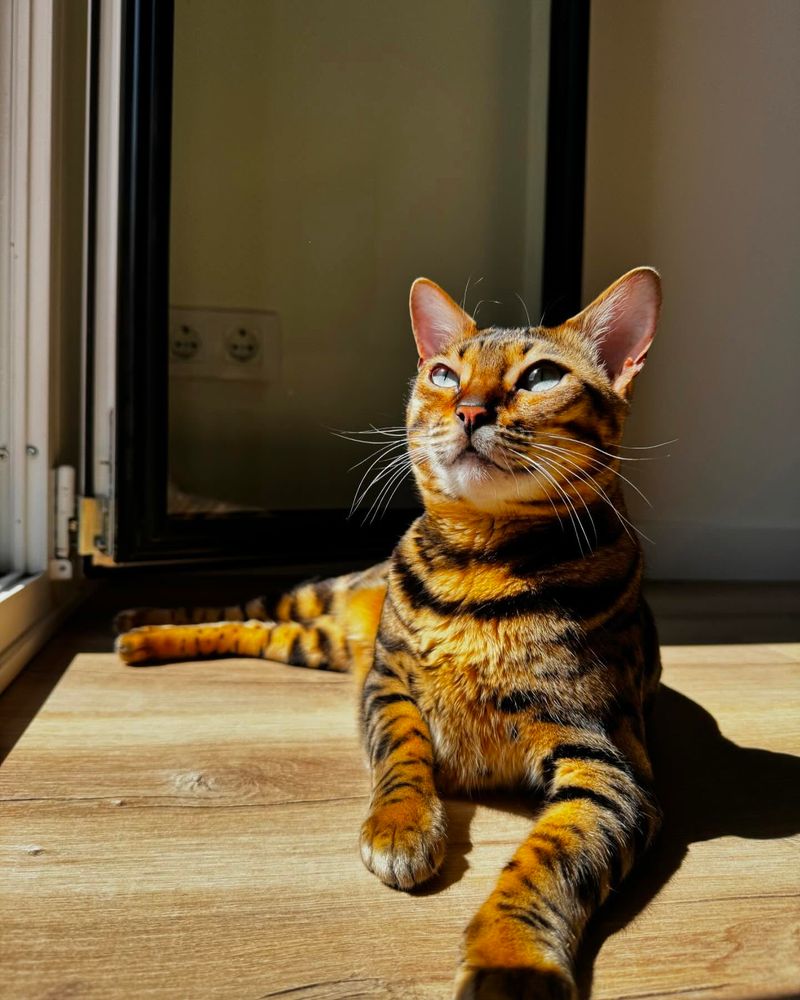📖 Table of Content:
- 1. Siberian Forest Cats: Nature’s Hardy Survivors
- 2. American Shorthairs: Built-In Resilience
- 3. Russian Blues: Naturally Blessed with Good Health
- 4. Savannah Cats: Wild Ancestry Equals Strong Immunity
- 5. Norwegian Forest Cats: Viking-Strong Constitutions
- 6. Egyptian Maus: Desert-Adapted Immune Systems
- 7. Burmese Cats: Surprisingly Sturdy Small Packages
- 8. Persian Cats: Beautiful but Breathing-Challenged
- 9. Sphynx Cats: Hairless and High-Maintenance
- 10. Scottish Folds: Cute Ears, Painful Joints
- 11. Maine Coons: Gentle Giants with Big Hearts (That Sometimes Fail)
- 12. Exotic Shorthairs: Persian Problems in a Shorter Package
- 13. Siamese Cats: Vocal About Their Many Health Concerns
- 14. Bengal Cats: Wild Looks with Domestic Health Concerns
Choosing a feline friend involves more than just picking the cutest face at the shelter. Some cat breeds naturally enjoy robust health with minimal medical intervention, while others require regular veterinary care due to genetic predispositions. Understanding these differences can help you prepare for the responsibility and costs of cat ownership.
Whether you’re looking for a low-maintenance companion or are ready to provide extra care, knowing which breeds typically thrive or struggle health-wise is valuable information for any potential cat parent.
1. Siberian Forest Cats: Nature’s Hardy Survivors
Evolving in Russia’s harsh climate created a naturally resilient breed with few health problems. Siberians developed strong immune systems that fight off common feline illnesses with remarkable efficiency. Their thick triple coat protects them from environmental stressors that might affect other cats.
Unlike many purebreds, they have a diverse genetic pool that helps them avoid hereditary conditions. Siberians rarely develop the respiratory issues or dental problems that plague other breeds. Their robust constitution means they typically need only routine check-ups rather than emergency visits.
Most Siberian owners report spending significantly less on veterinary care compared to friends with other cat breeds. This natural hardiness, combined with their playful personality, makes them excellent companions for people seeking a healthy, low-maintenance pet.
2. American Shorthairs: Built-In Resilience
Descended from working cats that sailed to America with European settlers, American Shorthairs boast impressive genetic diversity. These natural hunters were selected for health and hardiness over hundreds of years, not just appearance. Their background as mousers on ships and farms required strong constitutions to survive various environments.
With an average lifespan of 15-20 years, these medium-sized cats typically sail through life with minimal health complaints. Their moderate build avoids the extremes that cause problems in other breeds – no flattened faces causing breathing issues or extremely long bodies prone to spine problems.
Veterinarians often comment on their balanced physiology and natural resistance to disease. Their genetic diversity means they rarely suffer from the recessive disorders common in more selectively bred cats.
3. Russian Blues: Naturally Blessed with Good Health
Elegant and mysterious, Russian Blues carry a genetic lottery ticket when it comes to health. Their naturally occurring breed status means they’ve developed without excessive human intervention, preserving genetic diversity that protects against hereditary diseases. These slate-gray beauties typically maintain excellent health throughout their 15-20 year lifespan.
Russian Blues possess remarkably low levels of the Fel d1 protein that triggers allergic reactions in humans. This makes them one of the few breeds that allergy sufferers might tolerate better. Their dense double coat requires minimal grooming and rarely develops skin conditions.
Veterinarians particularly appreciate their standard body type – no extreme features that lead to breathing difficulties or joint problems. Their moderate activity level and naturally lean physique help prevent obesity-related illnesses that commonly affect more sedentary breeds.
4. Savannah Cats: Wild Ancestry Equals Strong Immunity
Born from crossing servals with domestic cats, Savannahs inherit the robust constitution of their wild ancestors. Their genetic diversity provides natural protection against many common feline ailments. These spotted athletes rarely struggle with the respiratory problems or heart conditions that affect other breeds.
Savannahs maintain an active lifestyle well into their senior years, naturally preventing obesity and related health complications. Their lean, muscular build supports excellent joint health, while their hybrid vigor—the enhanced biological fitness that comes from mixing distinct genetic lineages—contributes to overall resilience.
Many Savannah owners report fewer veterinary visits compared to previous cats they’ve owned. Their alert intelligence also helps owners notice subtle behavior changes that might indicate health issues early on. While their initial cost is high, their minimal healthcare needs often balance out the expense over time.
5. Norwegian Forest Cats: Viking-Strong Constitutions
Legends say these magnificent felines accompanied Vikings on sea voyages, and their hardy nature reflects this rugged heritage. Norwegian Forest Cats evolved naturally in Scandinavia’s harsh climate, developing sturdy bodies and superior immune systems. Their water-resistant double coat protects them from environmental stressors that might sicken other breeds.
Unlike many purebreds, “Wegies” maintain genetic diversity that shields them from many hereditary conditions. Their large, powerful frame supports excellent joint health, while their natural selection history means they weren’t bred for extreme features that cause health problems.
Veterinarians note their remarkable resistance to respiratory infections that plague other long-haired breeds. Their natural climbing abilities keep them physically active throughout life, preventing obesity-related illnesses. Most Norwegian Forest Cats live 14-16 healthy years with minimal veterinary intervention beyond routine care.
6. Egyptian Maus: Desert-Adapted Immune Systems
Ancient Egyptian art depicts these spotted hunters, suggesting thousands of years of natural selection. Egyptian Maus developed in harsh desert conditions where only the healthiest cats survived to reproduce. This environmental pressure created a breed with exceptional stamina and disease resistance.
Unlike breeds developed primarily for appearance, Maus evolved for function and survival. Their medium-sized, athletic bodies avoid the skeletal issues found in larger or smaller extreme breeds. With the fastest recorded running speed among domestic cats, they maintain excellent cardiovascular health through natural activity.
Maus possess unusually long intestinal tracts that efficiently extract nutrients from food, reducing digestive issues. Their naturally occurring spotted pattern indicates minimal inbreeding compared to cats with human-created coat colors.
7. Burmese Cats: Surprisingly Sturdy Small Packages
Behind those golden eyes lies one of the healthiest small cat breeds around. Original Burmese cats descended from a single female named Wong Mau, yet careful breeding expanded their genetic diversity. Their medium-sized, muscular bodies support excellent joint health despite their compact frame.
Unlike many small breeds, Burmese cats rarely develop dental problems or respiratory issues. Their short, low-maintenance coats seldom develop skin conditions or hairballs. With an average lifespan of 16-18 years, many Burmese cats reach their late teens or early twenties while maintaining good health.
While no breed is completely problem-free, the traditional Burmese body type avoids the extreme features that cause health issues in some modern breeds.
8. Persian Cats: Beautiful but Breathing-Challenged
Those adorable flat faces that give Persians their distinctive appearance, unfortunately, create serious health problems. Their shortened facial bones (brachycephaly) cause narrow tear ducts, restricted airways, and dental crowding. Many Persians struggle with chronic eye discharge, noisy breathing, and persistent snoring throughout their lives.
Their long, luxurious coats require daily grooming to prevent painful mats and skin infections. Without consistent care, Persians quickly develop hairballs that can cause dangerous intestinal blockages. Their sedentary nature makes them prone to obesity, which compounds breathing difficulties.
Polycystic kidney disease affects nearly 40% of Persians, requiring regular ultrasound monitoring. Their facial structure makes them vulnerable to heat stress even in moderately warm weather.
9. Sphynx Cats: Hairless and High-Maintenance
Without fur for protection, Sphynx cats face unique health challenges requiring frequent veterinary monitoring. Their hairless bodies make them vulnerable to sunburn, skin infections, and temperature fluctuations. Many Sphynx owners must apply sunscreen and moisturizers regularly to prevent painful skin conditions.
Their high metabolism means they eat significantly more than other cats their size, yet still struggle to maintain body heat. This energy demand stresses their digestive and cardiac systems over time. Without fur to absorb natural skin oils, Sphynx cats need weekly baths to prevent blackheads and skin fold infections.
Hypertrophic cardiomyopathy occurs at higher rates in Sphynx cats than in many other breeds. Their prominent ears collect dirt easily and require frequent cleaning to prevent infections. Despite their sweet personalities, Sphynx cats typically need veterinary attention every few months rather than just annual check-ups.
10. Scottish Folds: Cute Ears, Painful Joints
Those adorable folded ears come with a serious genetic cost – a cartilage abnormality that affects the entire skeleton. All Scottish Folds with folded ears carry a genetic mutation that causes osteochondrodysplasia, a painful joint condition. By their middle years, many develop arthritis far more severe than typical age-related joint changes.
Even kittens can show signs of discomfort, with shortened, thickened tails and abnormal leg posture. As they age, their gait often becomes stiff and awkward. Many Folds eventually struggle with basic movements like jumping and climbing that other cats enjoy throughout life.
Scottish Fold owners should budget for pain management medication, specialized diets, and mobility aids throughout their cat’s 11-14 year lifespan. Regular veterinary monitoring is essential to manage their progressive joint deterioration.
11. Maine Coons: Gentle Giants with Big Hearts (That Sometimes Fail)
America’s native gentle giants face an unfortunate genetic predisposition to hypertrophic cardiomyopathy (HCM), a serious heart condition. This progressive disease causes heart wall thickening and can lead to sudden cardiac failure, even in young, apparently healthy cats. Responsible Maine Coon owners schedule annual cardiac ultrasounds to monitor heart function.
Their massive size puts additional strain on joints and bones. Hip dysplasia affects Maine Coons at higher rates than average-sized cats, often requiring pain management by middle age. Many develop spinal muscular atrophy, a genetic condition causing muscle weakness in the hind legs.
Polycystic kidney disease also appears more frequently in Maine Coons than many other breeds. Their long, dense fur requires regular grooming to prevent painful mats and skin infections.
Despite these challenges, with proper veterinary care, Maine Coons can live 12-15 years, though owners should budget for specialized cardiac and orthopedic care.
12. Exotic Shorthairs: Persian Problems in a Shorter Package
Created by crossing Persians with American Shorthairs, Exotic Shorthairs inherited the Persian’s flat face without the long coat maintenance. Unfortunately, they also inherited all the breathing problems. Their compressed facial structure causes chronic sinus infections, noisy breathing, and heat intolerance that requires regular veterinary attention.
Tear duct abnormalities lead to constant eye discharge that can stain and irritate facial skin. Without daily cleaning, many develop painful skin infections in their facial folds. Their shortened jaws often can’t accommodate normal tooth alignment, causing dental overcrowding and periodontal disease.
Polycystic kidney disease affects Exotics at similar rates to Persians, requiring ultrasound screening. Their shortened muzzles make them prone to choking on food and respiratory infections. While their plush, low-maintenance coat was intended to make them easier to care for than Persians, Exotic Shorthairs still require significantly more veterinary intervention than cats with normal facial structures.
13. Siamese Cats: Vocal About Their Many Health Concerns
Famous for their striking blue eyes and vocal personalities, modern Siamese cats unfortunately face numerous health challenges due to selective breeding. Their slender, elongated bodies predispose them to progressive retinal atrophy, causing gradual blindness, and amyloidosis, which damages internal organs, particularly the liver.
Respiratory issues plague many Siamese cats throughout their lives. Their narrow skull shape contributes to a higher rate of neurological problems, including seizure disorders. Crossed eyes and kinked tails, once common in the breed, have been bred out cosmetically, but the genetic tendencies remain.
While Siamese cats typically live 12-15 years, many require specialized veterinary care for chronic conditions. Their intelligence and vocal nature help owners quickly identify when something’s wrong.
14. Bengal Cats: Wild Looks with Domestic Health Concerns
Beneath that stunning spotted coat lies a breed prone to several serious genetic conditions. Hypertrophic cardiomyopathy affects Bengals at higher rates than many other breeds, requiring regular cardiac ultrasounds throughout life. Their Asian leopard cat ancestry introduced pyruvate kinase deficiency, a red blood cell disorder that causes anemia and chronic fatigue.
Progressive retinal atrophy appears more frequently in Bengals than average domestic cats, potentially leading to blindness. Their highly active nature means joint injuries occur more commonly, especially in homes without adequate climbing and exercise opportunities.
Bengals often suffer from digestive sensitivity, requiring specialized diets. Their intelligence and high energy make them particularly prone to stress-related conditions when bored or understimulated.
